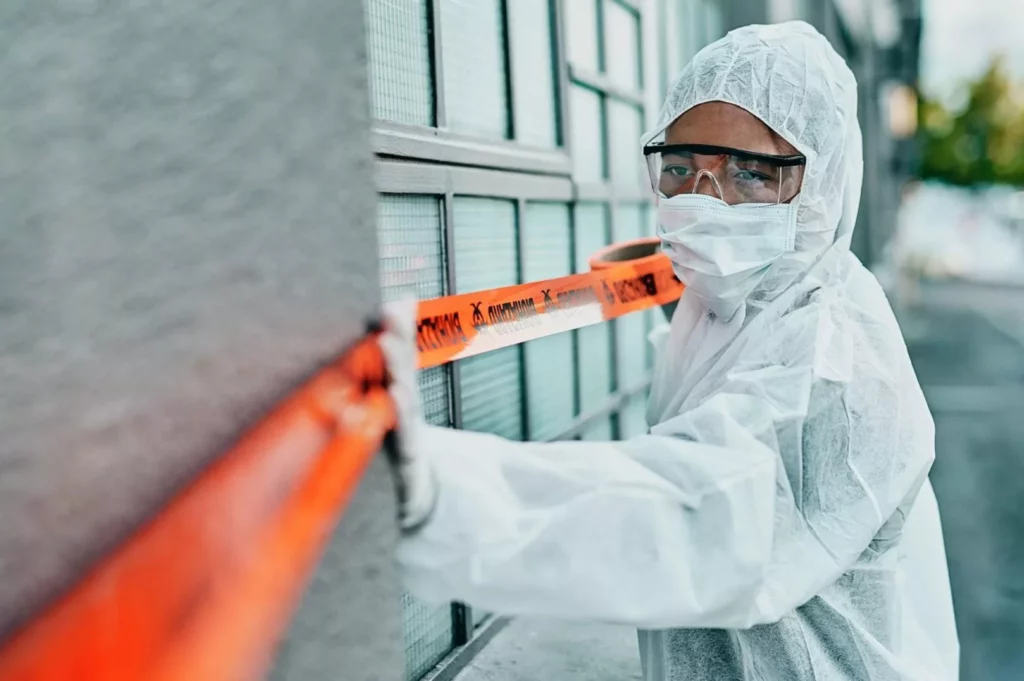However big or small, everywhere requires a certain level of maintenance, from an office block or bedroom to an industrial factory or vehicle, and everything in between. But when the mess is significant and hard to clean, or the cause is potentially harmful to come into contact with, returning the area back to its former glory requires an expert eye. This is where deep cleaning comes in. Offering a far more thorough approach than normal cleaning and removing any trace of the mess, deep cleaning ensures that a certain space and everyone in it is safe.
Deep cleaning is an extensive approach to eradicating the presence of unwanted substances – both harmful and safe – from a chosen area.
These services are also frequently required for assisting the emergency services in what is referred to as trauma cleaning. In this setting, deep cleaning helps with clearing up crime scenes, decontaminating emergency vehicles and restoring the condition of buildings that were seriously damaged by fires.
Despite these two different focuses, deep cleaning may also be applicable to domestic uses, with services available to members of the public and privately owned areas that require a professional clean depending on their needs. Examples of when this could apply include cleaning up the house of someone who’s been hoarding for several years or removing significant damage to a property caused by bird droppings.
What constitutes a deep clean?
The difference between a clean and a deep clean is rather significant. While cleaning is something that someone will do in every environment – be it domestic, commercial or otherwise – a deep clean is a one-off service that is catered to fixing an especially concerning mess. This could be something as minor as a precautionary prison cell clean to a far more meticulous cleaning of a street where a road traffic accident took place.
Methods used for carrying out a deep clean are based on a number of factors, such as the involved substances, whether they carry harmful properties and the area or material that’s being cleaned. For example, cleaning a substance out of a carpet will require a different approach to wood flooring or concrete, as would removing blood, for instance, from materials as opposed to other fluids.
Before the cleaning process can begin, a risk assessment would be taken to determine what’s being cleaned and the best approach for completely restoring it. When the correct cleaning procedure is identified, the area can be secured, everyone involved can change into protective clothing, all removable items can be disposed of and a suitable method of cleaning can be used to completely eradicate any unwanted substances from the area. If any furniture or other items aren’t entirely destroyed from the damage, the cleaner may also attempt to clean them if it’s possible to do so.

Is deep cleaning necessary?
The primary purpose of deep cleaning is to remove any trace of substances and mess in the area or items being cleaned. Without it, harmful chemicals, bodily fluids or dangerous items could be dangerously close to anyone that occupies the area in the future, potentially leading to serious harm.
On a broader scale, deep cleaning functions across three core areas. These are trauma (damage caused to an area such as a crash, flood or fire) biohazard (damage resulting in bodily fluids and hazardous materials being released) and decontamination (damage leading to chemicals and other harmful substances being released). All three of these fields cover a number of different environments and situations where a thorough and extensive cleaning service is required.
Types of deep cleaning based on the three core areas include:
Trauma:
- Trauma cleaning (bodily fluids removed for decontamination purposes)
- Forensic cleaning (bodily fluids removed for hygiene purposes)
- Crime scene cleaning
- Undiscovered death cleaning (bodies removed before, during or after decomposition)
- Road traffic accident cleaning (bodily fluids and other mess left behind in outdoor areas)
Biohazard:
- Squatter cleaning (property restoration and waste removal)
- Hoarder cleaning (waste removal for hygiene purposes)
- Drug and meth lab cleaning (hazardous waste removal)
- Bird dropping cleaning (waste removal and decontamination)
Decontamination:
- Ambulance and vehicle cleaning
- Air and surface cleaning (pathogen elimination and cross contamination prevention)
- Prison cell cleaning (decontamination and trauma cleaning)
If you or your business has a problem that falls into one of the above categories or if you want to enquire about another form of deep cleaning service, you should contact Ideal Response for proven, expert deep cleaning solutions.



